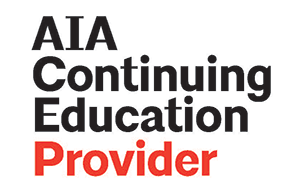 | 1 LU |
 | 1 LU |
Our learners need to be problem solvers, critical thinkers and modifiers of their world and it is our responsibility to provide the most seamless and transparent set of tools as they learn to analyze, question, elaborate, refine and evaluate their own ideas... to create and to Innovate.
Unfortunately, within the walls of our educational environments we have long permitted brave educators to clutter classroom environments to a point of discomfort negatively affecting the health, safety and potential of its learners. As designers we sometimes continue the delivery of “kitchen cabinets” within classrooms without the knowledge that this antiquated harboring device is simply not suited for today’s set of resources. Subsequential responses of simply removing all available cabinetry, shifting the emphasis on wheels, is placing an additional burden on space.
In this session, we will discuss the disconnects that permitted us to arrive at this point in time, indicate rules for appropriate systematic solutions, guidelines and recommendations for stuff, as well as the agile movement and housing of these resources that rarely emerge in portfolio imagery. This past year our knowledge has been heightened to reinforce emerging pedagogical demands of AGILE environments supporting “simple and easy” pivots. We further understand that authentic learning can be quite messy, thus the necessity to recognize the requirements and disconnects of space as it relates to clutter. Teacher testimonials will indicate that decluttering can not only be a systematic approach but one that is fully embedded with agency and inclusion.
This presentation will explore fresh, new innovative concepts for all attributes of educational space that support the disconnects when simply delivering storage on wheels. We will explore a variety of designed solutions, themes and “apparent trends” for the kitchen sink replacement within various parts of the county focusing on observed disconnects and hurdles.
This presentation is intended to be a sampling of ideas with hidden interactive components to enable attendees to reflect upon on their own inability to see the forest thru the trees.
Within the professional development component of our work, proven “tricks of the trade” defined as our kit of parts that are utilized within our past sessions will be shared to the attendees for a greater understanding of our work. These components include but are not limited to an actual mini workshop session, train the trainer concepts, a sampling of sometimes humorous but true “if you” statements as well as educator testimonials.
We will provide examples of key lessons learned to support change not only from our research but from various researchers world-wide as well as the recommendation to read these historic change-agents in educational design.
Learning Objectives:
David A. Stubbs II, CEO/President/Founder, David Stubbs Design
David has been recognized as one of the most important industry leaders in establishing physical solutions for next generation educational environments. He has won numerous national awards and serves as member of a few educational design teams including Reimagine America’s Schools’ and the Emergent Design Studio.
From his work in public school facilities, his passion focuses on the social/emotional and physical requirements of our stakeholders supporting manufacturer’s, designers and school communities throughout the world from the disruptive yet “safe” approach to design.
In 2012 David designed Shift+, the first holistic and reconfigurable array of educational furniture components, in partnership with VS America. Shift+ continues to be instrumental in transformations within the worldwide educational marketplace.
David assists educational institutions and design professionals, supporting programming and professional development needs while delivering detailed, systematic conversations surrounding the disruptive innovation approach to design.
David is not only an innovator, researcher, designer, and creator, he is also a our social, emotional and our physical connectivity surrounding SPACE, its various enhancements and attributes.
David continues to demonstrate his passion within the educational community with valuable insight on how to bridge the gap between curriculum/instruction and the built environment – creating truly agile environments with two new systems of educational furniture this fall.
David can be contacted david@DavidStubbsDesign.com or visit https://www.DavidStubbsDesign.com